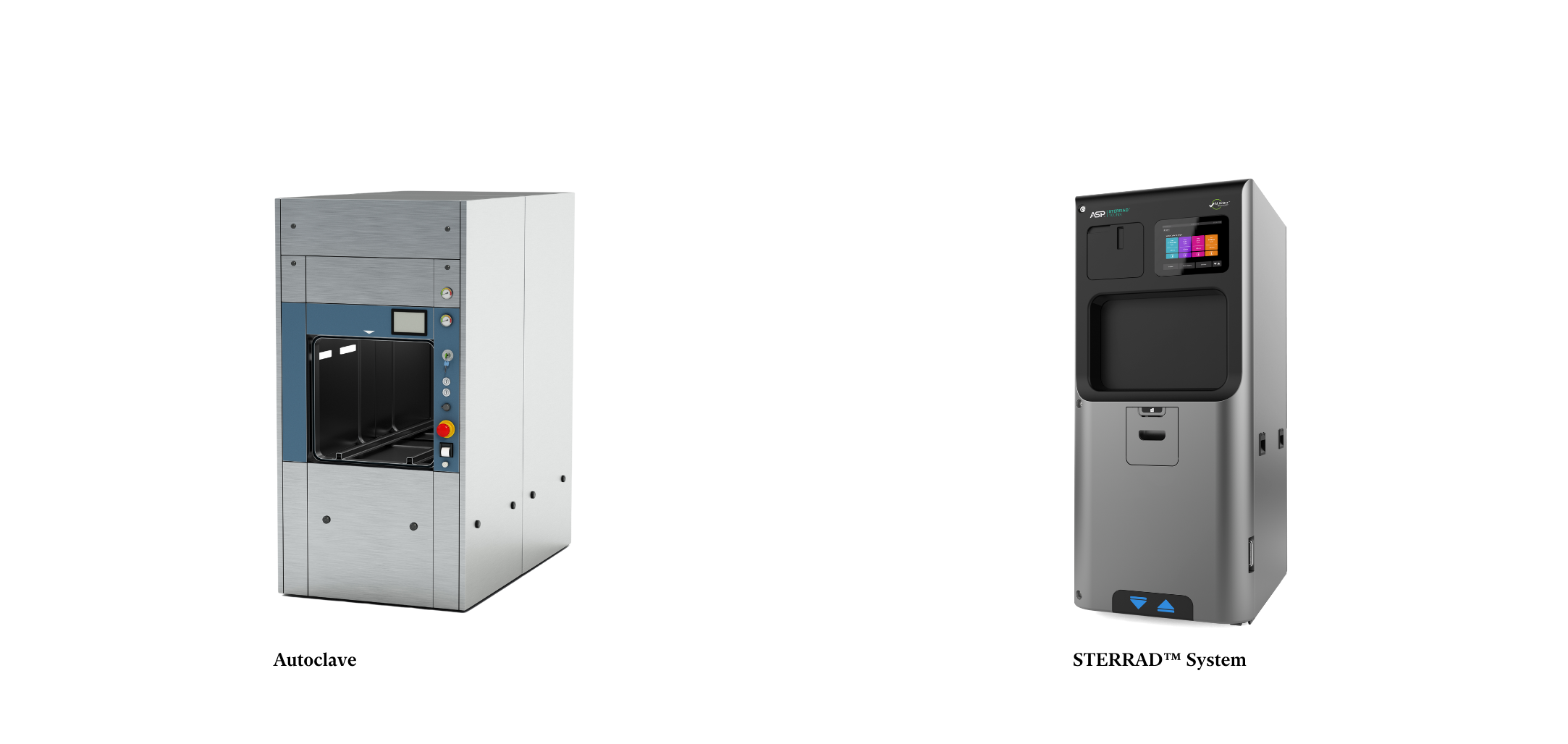How do the two sterilization system relate to temperature?
- Autoclave: since autoclaves utilize high temperatures for sterilization, they are most effective for materials that can withstand such heat, including stainless steel surgical instruments and certain heat-resistant plastics. However, instruments that are sensitive to either heat or moisture may be compromised or damaged when subjected to autoclave processes¹.
- STERRAD™ systems: STERRAD™ systems are specifically engineered to handle temperature-sensitive and moisture-sensitive instruments. Operating at lower temperatures, typically between 50–55°C (122–131°F), these systems are especially effective for delicate medical devices, including endoscopes with a maximum lumen length of 1,065 mm (check sterilizer IFU). The low-temperature approach ensures that instruments with complex electronic components or narrow lumens are protected from damage that might occur with traditional high-temperature sterilization methods, while still delivering thorough and effective sterilization².
What are the cycle times of autoclaves and STERRAD™ Systems?
- Autoclave: the duration of autoclave cycles can vary significantly based on factors such as load size and the type of materials being sterilized. Typically, these cycles can range from 15 to 90 minutes¹, accommodating various sterilization needs.
- STERRAD™ Sterilizers: in contrast, STERRAD™ systems are known for their efficiency with shorter cycle times, generally between 28 to 75 minutes². This faster turnaround is particularly advantageous in emergency situations or high-volume environments where rapid instrument turnover is crucial for maintaining workflow and patient care².
How do autoclaves and STERRAD™ Systems sterilization impact the environment?
- Autoclave: autoclaves demand substantial amounts of water and energy to generate the steam necessary for sterilization. While they do not release harmful chemicals into the environment, the significant energy consumption involved in the process can pose challenges for facilities that are striving to adopt more sustainable practices³
- STERRAD™ system: the STERRAD™ system is considered more environmentally friendly. It uses hydrogen peroxide, which breaks down into water and oxygen, leaving no toxic residues². Additionally, the low temperature and dry process require less energy than steam-based systems⁴.
What are the application fields of the two sterilization methods?
- Autoclave: autoclaves are versatile and can sterilize a wide range of materials, including glassware, surgical instruments, and textiles¹. While highly effective, autoclaves are not suitable for all instruments, particularly those sensitive to heat and moisture. Additionally, their larger size and reliance on water and power can make them less practical for small facilities¹.
- STERRAD™ Sterilizer: is best suited for delicate, complex instruments, such as endoscopes, cameras, and instruments with narrow lumens². It’s commonly used in hospitals for devices that can’t withstand the high heat of autoclaves².
Conclusion
While both autoclaves and STERRAD™ systems are essential for maintaining sterile environments in healthcare and for ensuring patients safety, STERRAD™ sterilizer stands out with significant advantages.
Autoclaves are suitable for heat-resistant instruments and are recognized for their reliability and versatility1. However, STERRAD™ offers an innovative technology, using a low-temperature, rapid sterilization process that is not only ideal for delicate, heat-sensitive instruments but also far more environmentally friendly. By eliminating the need for excessive water and energy, STERRAD™ aligns with sustainability goals, making it the preferred option for facilities that prioritize both efficiency environmental responsibility and on top of everything, patients’ safety.2

